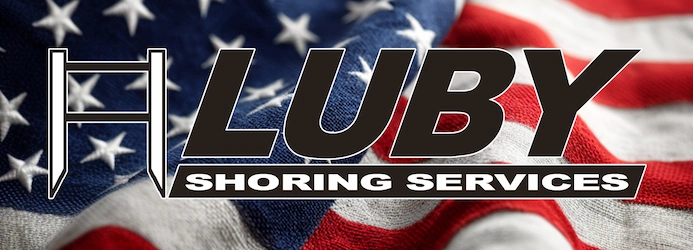Trench shoring is a procedure that braces the walls of a trench to prevent collapse and protects workers.

Trenching and excavation are some of the most hazardous occupations. A number of workers get injured every year while performing their jobs. So it is imperative to have a protective system to ensure the safety of trench workers.
The competent person is responsible for deciding and implementing the protective measures. He has the ability and experience needed to identify the potential and existing dangers at the site. He is expected to choose the protective system on the basis of the type of soil and the depth and width of the trench.
The Dangers Involved in Trenching
The earthen walls of a trench can collapse and injure the workers inside. This is the most important danger faced by the employees who work on an excavation site. Besides this, the workers can get injured in other ways. If the work site is cluttered the workers can slip and fall. They can get a shock from the underground or overhead electrical lines.
They have to work in the proximity of high traffic and utilities and manually handle material and heavy machinery. All of this can be dangerous.
Different Protective Systems
- Shoring – In this, the sides of an excavation are supported by posts, struts, wales and sheeting made of timber, and hydraulic or mechanical structures. This method is suitable for providing protection in excavations where sloping is not practical because of the depth or location of the trench. Shoring provides even pressure. The workers do not have to enter the trench to install it.
- Shielding – Shielding involves the use of a trench box or shield. It does not avert a cave-in. Instead of this, it protects the workers from harm if there is a cave-in. This protective system is useful for a continuous installation work like laying pipes. The workers can drag the box with them wherever they work.
- Sloping – This is a protective system in which the earthen walls of an excavation are cut back at an angle to avert a cave-in.
- Benching – In this method, the walls of the excavation are cut into steps to prevent a cave-in and provide protection to the workers.
Advantages of Shoring and Shielding
Sloping and benching are not practical for most of the excavations. A large amount of space is needed to dig the trench at the correct angle. Often this is not possible because the excavations have to be done in busy areas where there is a lot of traffic.
Another reason why they are not very suitable is that towards the end the soil which has been removed has to be put back and compacted, this costs extra money and time.
Shoring and shielding are more advantageous. They are more economical than sloping and benching. They maintain the trench walls in a vertical position. This reduces the quantity of excavated soil and fuel consumption. It also makes the work of restoring the yards, asphalt and pavement easier.
St. Louis Trench Shoring
If you have any questions regarding trench shoring, call Luby Shoring Services today at (636) 660-7467 or fill out our online contact form.
Luby Shoring Services has the expertise to work with you on site specific engineering services. We can quickly complete any job while meeting OSHA safety regulations.
